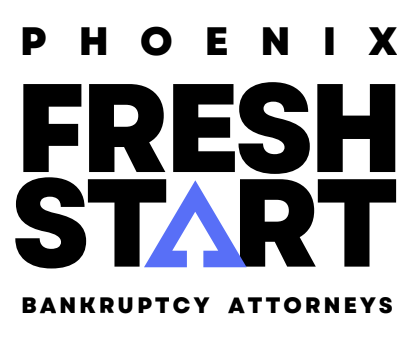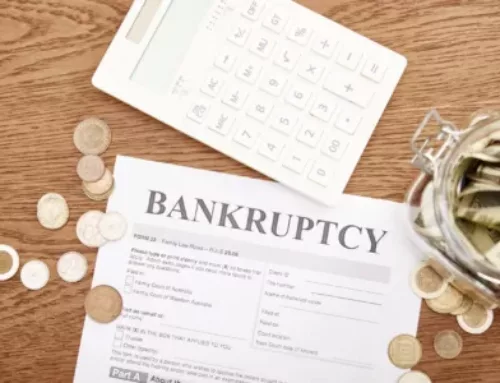Chapter 13 bankruptcy or also known as the “wage earners” bankruptcy, refers to a United States bankruptcy proceeding in which you can restructure your finances under the approval of the bankruptcy court. Seeking Chapter 13 protection allows you to set up a debt repayment plan and keep your assets and property. This bankruptcy chapter requires you to have a stable income to be able to stick with the repayment plan. This chapter aims to keep current on loans, repay debts, and protect your assets from liquidation. Under Chapter 13 bankruptcy, you can keep your property, avoid possession, and avoid foreclosure as long as you complete a court-approved repayment plan.
Before you file for bankruptcy, it is advisable to consult a qualified Phoenix bankruptcy lawyer. He or she can help you assess your financial situation and determine whether this chapter is the best option for you to have a fresh start and aim for a debt-free life. One of the most crucial steps of the bankruptcy process is the completion of the bankruptcy paperwork.
You need to fill out the official bankruptcy forms with the complete details of your present financial status. You need to declare all your assets, liabilities, monthly income, living expenses, bank account information, credit card debt, loan debt, and property transactions. In addition, one of the most important documents to include in your paperwork is the bankruptcy schedule. This article will explain the definition and meaning of bankruptcy schedules by answering the following questions:
- What is a Bankruptcy Schedule?
- What are the Different Types of Bankruptcy Schedules?
- What is the Role of a Bankruptcy Lawyer?
What is a Bankruptcy Schedule?
A bankruptcy schedule is a detailed overview of your current financial situation. It is an important part of your bankruptcy paperwork needed to file for a bankruptcy petition. Schedules are documents that you need to prepare and submit to the bankruptcy court. These documents must state all your relevant personal and financial data. You need to provide important information including your income, expenses, debt, and property and must be completed properly to avoid dismissal of the case.
What are the Different Types of Bankruptcy Schedules?
There are various bankruptcy schedules and each schedule requires you to declare specific information. The bankruptcy schedule from A to J must include the following details:
Schedule A (Official Form 106A) – It is a list of all the real estate or real property that you own. It includes your houses, buildings, land, and timeshares. In addition, you must declare the value of your asset or property and any secured claims against it. Secured claims create liens against your property (including your mortgage).
Schedule B (Official Form 106B) – It is the list of your personal property such as jewelry, bank accounts, household items, or vehicles. You must also include intangible property such as retirement plans and stocks. Don’t forget to declare the property value as well.
Schedule C (Official Form 106C) – It refers to the list of the state and federal exemptions that can protect your property and assets. Filing this form requires knowledge of bankruptcy laws, therefore, consulting a credible Phoenix bankruptcy lawyer can help you better understand the claims of exemption.
Schedule D (Official Form 106D) – It lists your secured creditors. In a secured claim, the creditor has the right to seize your property used as collateral in case you default on your loan. This includes the name and residential address of the creditor, the amount of debt, the date when the debt was incurred, and the amount of unsecured debt (difference of collateral value and total amount of debt).
Schedule E (Official Form 106E) – This is the list of your priority debts such as alimony, child support, and income taxes. These are debts that you need to pay since these debts are not qualified for a discharge.
Schedule F (Official Form 106F) – It lists your unsecured debts that are qualified for a discharge. It includes medical bills, credit card bills, and personal loans.
Schedule G (Official Form 106G) – The list includes unexpired leases and executory contracts that you have agreements with. This may include car or residential leases. You need to describe the nature of the contract and include the full names and complete addresses of all parties involved in it.
Schedule H (Official Form 106H) – It lists the co-debtors or co-signers of any debts that you owe. You must include the individuals who are also liable for any of the debts listed in your schedules. For instance, if you are married and you decide to file a petition on your own, you may need to list your spouse as a co-signer since you share responsibilities in paying off your debts.
Schedule I (Official Form 106I) – It is a list of all household income sources such as business income, wages, child support, alimony, pension, social security income, and other sources.
Schedule J (Official Form 106J) – It refers to the list of your expenses and monthly budget. It includes your expenses such as rent, utilities, insurance, groceries, transportation, child support, child care costs, and alimony.
What is the Role of a Bankruptcy Lawyer?
Completing the bankruptcy schedules and other bankruptcy forms is complicated and time-consuming. Many debtors are confused about what bankruptcy schedules are and what role they play in a bankruptcy case. Honesty is important when you create bankruptcy schedules. Omission or declaration of false information can lead to a perjury or bankruptcy fraud case. You have to ensure that all the details written on your paperwork are accurate before you file your case to the local court and pay the filing fees. For legal help in filing for bankruptcy, do not hesitate to schedule a consultation with our competent Phoenix bankruptcy lawyers at Phoenix Fresh Start Bankruptcy. Contact our bankruptcy law firm to avoid errors in creating bankruptcy schedules and filling out bankruptcy forms.











